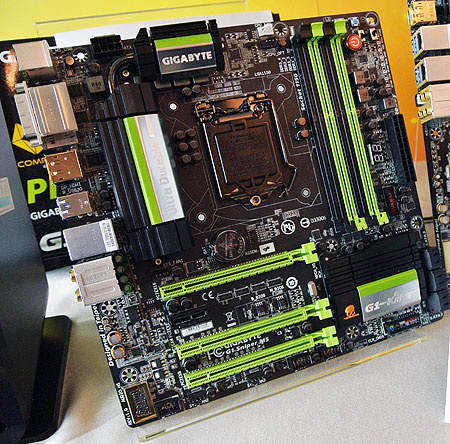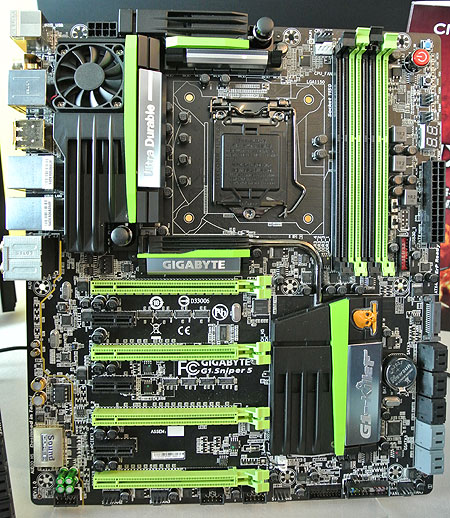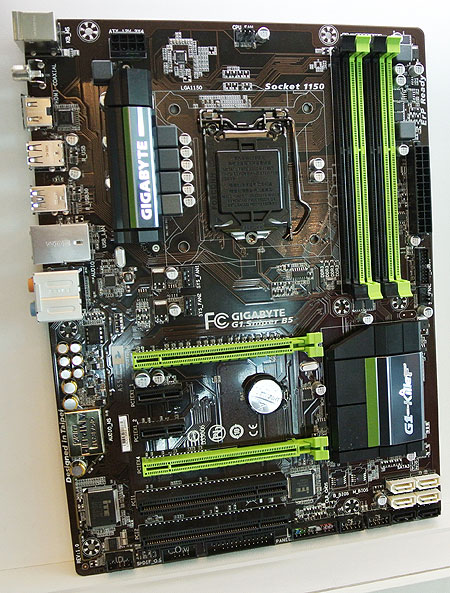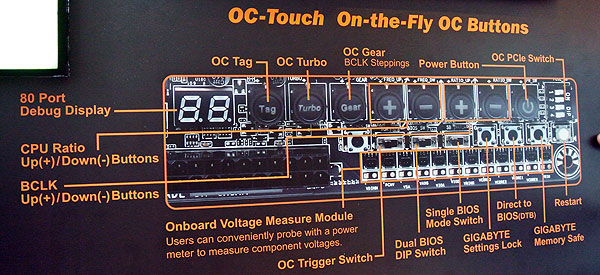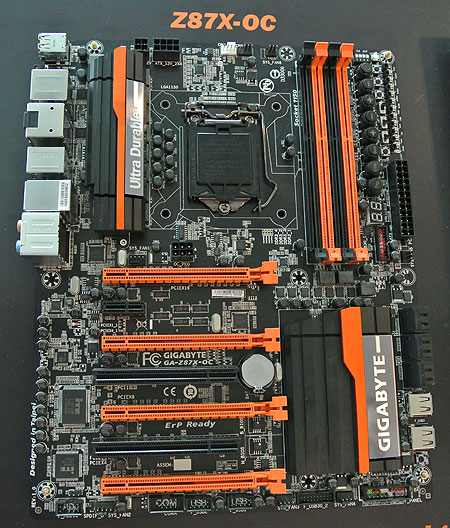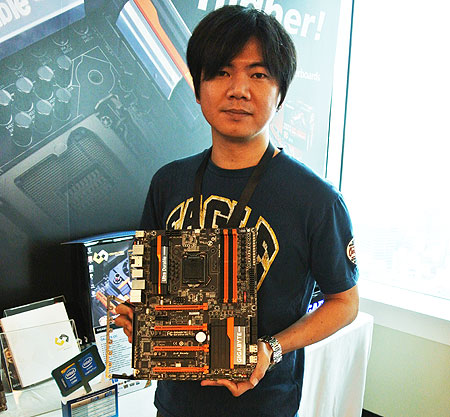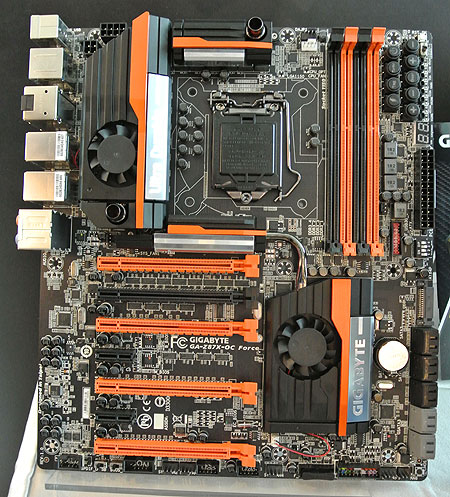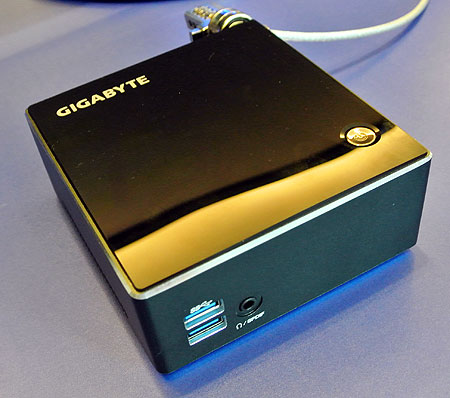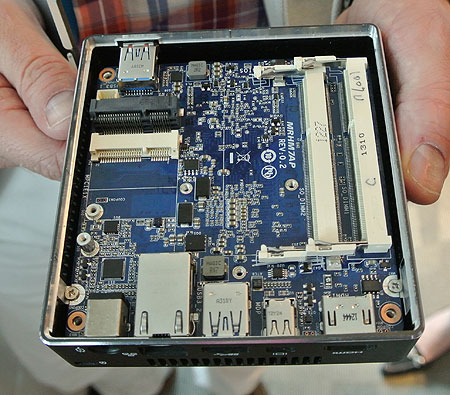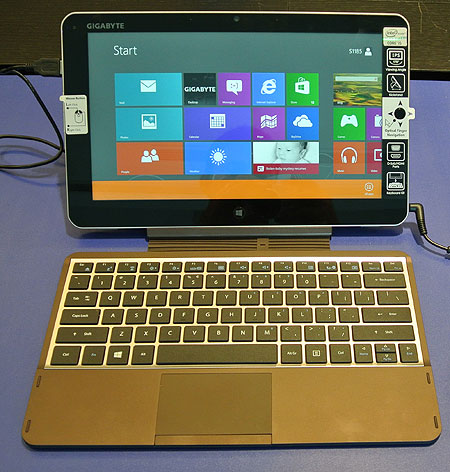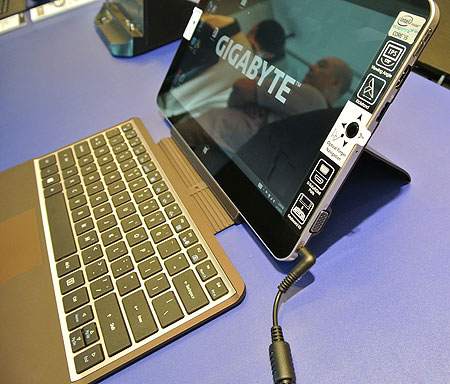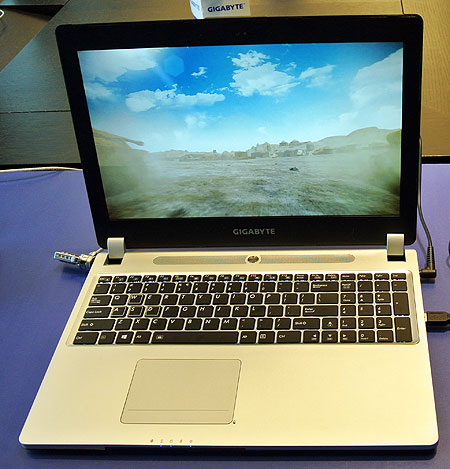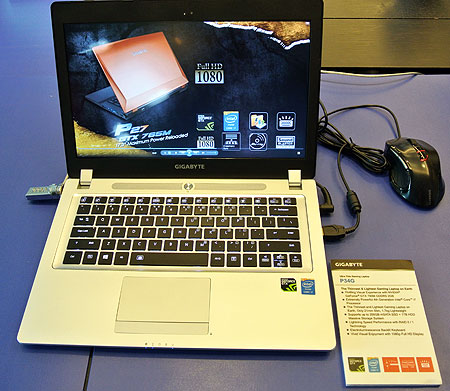Computex 2013: Motherboards, Peripherals, And Mobility
Gigabyte, Continued
Gigabyte also had new boards to show off from its G1.Killer family. They all have high-end audio features now, thanks to Creative's Sound Core3D chip. Moreover, the platforms include socketed op-amps for enthusiasts who'd rather tweak the audio output themselves. The amp can even be bypassed through software. Company reps claim that Gigabyte is the first company to offer this as an option on its motherboards. And while we've tested sound cards with socketed op-amps before, this is indeed our first board equipped with that flexibility.
Each board comes with two amps and an extractor tool to swap them. There’s also an upgrade kit on the way with three amps that Gigabyte plans to sell for $50. As an audio hack, I’m happy with a software equalizer and a clean circuit. However, audiophiles might see the benefit of a more specialized sound subsystem (if they're willing to give motherboard-down audio a try in the first place, that is). To its credit, Gigabyte does try to isolate the audio circuit as much as possible, separating the PCB layer and leveraging gold-plated connectors to discourage corrosion.
While the Assassin sits at the top of the G1.Killer series, the Sniper represents the upper mainstream. Gigabyte has two new offerings in that range: the ATX-sized G1.Sniper 5 and microATX G1.Sniper M5. The Sniper 5 can handle four-way CrossFire and SLI thanks to a PLX switch. It comes with new heat sinks that accommodate fans or water blocks. Killer's Ethernet technology is also part of the deal, along with an Intel network controller.
AMD gets some love in the form of Gigabyte's G1.Sniper A85X with a Socket FM2 interface. It's expected to sell for between $100 and $110. You get the same Creative Sound Core3D chip, the socketed op-amp, and support for two-way CrossFire and SLI. Purportedly, the company is also thinking about introducing a Socket AM3+-equipped G1 board for the Steamroller architecture update to AMD's FX family.
We also saw a B85-based G1.Sniper B5. It might seem strange that there's a gaming-oriented platform based on a business-class chipset, but Gigabyte envisions this one in Internet cafes. It doesn’t include Sound Core3D, but instead hosts a Realtek audio chip.
Next, we got our hands on the Z87X-OC and Z87X-OC Force. Both boards feature a host of powerful overclocking features and on-board buttons for controlling them. In the picture above, you can clearly see USB ports on the front edge for convenient access on an open bench.
The mainstream Z87X-OC was designed by well-known overclocker HiCookie, who Gigabyte hired as a consultant. It has more metal inside the power connectors to keep them from melting under heavy loads. A new feature called OC Ignition delivers power to the system when the CPU is off, so fans spin, PCI Express slots are fired up, and the memory doesn't flush. PCIe slots can be turned on or off individually via DIP switches. And you get a graphics card brace for holding add-in cards steady outside of a case. There’s also a feature to drop clock rates during the early stages of LN2 overclocking. HiCookie already broke a record with the Z87X-OC, taking a G.Skill memory kit to 4.168 GT/s. The previous record was 3 GT/s. Expect to find this product for sale in the $200 range.
Get Tom's Hardware's best news and in-depth reviews, straight to your inbox.
The Z87X-OC Force is Gigabyte’s highest-end overclocking board, populating an E-ATX form factor. It comes with extra features like a PLX switch for four-way CrossFire and SLI compatibility, dual gigabit Ethernet controllers, four SATA 6Gb/s ports, 802.11a/b/g/n Wi-Fi, Bluetooth 4.0, and a front-access USB 3.0 panel. Expect to pay $410 for the honor of owning this one, though.
It’s nice to see that Gigabyte finally updated its software suite with a consistent and customizable interface. The new App Center (for Intel 8-series chipsets only, unfortunately) hosts applications like EasyTune, which is more feature-rich and, frankly, not as ugly. New overclocking-friendly UEFI features are good to have as well. Gigabyte's Memory safe, for example, reverts to a known-good data rate if an overclock fails. There's also an option to go straight into the UEFI without hitting the Del key. That's particularly nice in a Windows 8 world, where you need to be super-fast to beat the boot process.
Gigabyte’s Touch chassis fits Intel's standard for all-in-ones. It accommodates SO-DIMM memory, mSATA drives, and it requires no fan; the enclosure functions as a heat sink instead.
The Brix PC hosts soldered-in mobile Ivy Bridge-based CPUs ranging from the Celeron 1007U to the Core i7-3537U. It comes with Wi-Fi, USB 3.0, HDMI output, DisplayPort output, and LAN connectivity. You simply drop in memory and an mSATA drive. The first model is already available on Newegg for $300. Gigabyte also has an upcoming version with a built-in projector, but we weren’t allowed to take photos of that prototype. Expect it in the August timeframe.
We saw two other upcoming mini-PCs using the same chassis. Both prototypes are called GB-XM1, but one is powered by AMD’s Kabini APU (from the E1-2100 to A4-5000), while the other is Haswell-based (Core i3-4010U to Core i7-4500U)
The new Padbook S1185 convertible tablet hosts anywhere from a Pentium to a Core i5 CPU, and is purported to offer five usable hours of battery life in Core i5-equipped trim. Gigabyte is introducing a nifty feature that simulates a touchpad on the side of the tablet so thAT your finger doesn’t get in the way of what you’re looking at. The S1185 is expected to sell for $900.
The P35K is a new gaming laptop with optional Thunderbolt connectivity. It comes with a backlit keyboard, 15.6” full HD IPS panel, and is fairly thin at 21 mm-tall. Armed with a Core i7 CPU, up to a GeForce GTX 765M GPU, and as many as four storage drives, it should be a capable $1300 laptop.
The P34G is the P35K’s little brother. Gigabyte boldly claims that this is the thinnest and lightest gaming laptop on earth, though that's certainly open to interpretation. It’s also 21 mm-thick, but weighs a svelte 1.7 kg with a 14” screen. Armed with a Haswell mobile Core i7 CPU and GeForce GT 760M graphics, this product will set you back about $1000 when it surfaces.
Don Woligroski was a former senior hardware editor for Tom's Hardware. He has covered a wide range of PC hardware topics, including CPUs, GPUs, system building, and emerging technologies.
-
ojas "Surprise, it runs Android"Reply
What's the surprise? All intel-based phones run Android...in fact, Intel explicitly expressed a lack of desire to enter the WP market for the time being.
And the K900's launched in India too, now. -
RedJaron I'd be interested to know how MSI runs their OC line cooling test. A 4.6GHz CPU will need some kind of active cooling, and that cooler will at least partially induct some airflow over the VRM. Or do they just simulate the CPU with a current draw? And speaking of VRM, I thought Haswell brought the VRM into the CPU, so what do these massive 20 phase VRMs do?Reply -
laststop311 28 watt iris 5100 ultrabook chips increases the bloodflow to certain parts of my body. You can pretty much do very very good 768p casual gaming on the iris 5100. This will make some for really really thin and sexy laptops.Reply
How is this for a mind blower The Asus Zenbook infinity is so super sexy looking. Now the iris pro is only on standard voltage so I know we won't see that but the ultrabook level cpu's do have HD IRIS 5100 support Now since 2560x1440 is double 1280x720 should be able to game at 1280x720 with perfect scaling just much better clarity. And The Iris Pro 5100 (especially if you keep cpu stock and use all your tdp headroom to OC the graphics) it will be able to run pretty much any game with many on high setting and med high) at a relatively easy 1280x720 resolution.
That new infinity may even be a decently fun casual gamer machine too. I'm freaking in love. I need to marry it already. -
8350rocks Meh, some of the gigabyte stuff was cool...not much love for AMD oriented products this time though. I like the direction MSI is going, if they can get that product out...I would consider it for my next build.Reply

